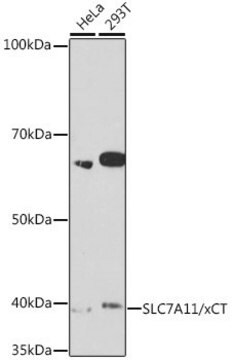Y0000364
Clioquinol
European Pharmacopoeia (EP) Reference Standard
동의어(들):
5-Chloro-7-iodo-8-quinolinol, 5-Chloro-8-hydroxy-7-iodoquinoline, Clioquinol, Iodochlorhydroxyquin
로그인조직 및 계약 가격 보기
모든 사진(1)
About This Item
실험식(Hill 표기법):
C9H5ClINO
CAS Number:
Molecular Weight:
305.50
Beilstein:
153637
MDL number:
UNSPSC 코드:
41116107
PubChem Substance ID:
NACRES:
NA.24
추천 제품
Grade
pharmaceutical primary standard
API family
clioquinol
제조업체/상표
EDQM
응용 분야
pharmaceutical (small molecule)
형식
neat
저장 온도
2-8°C
SMILES string
Oc1c(I)cc(Cl)c2cccnc12
InChI
1S/C9H5ClINO/c10-6-4-7(11)9(13)8-5(6)2-1-3-12-8/h1-4,13H
InChI key
QCDFBFJGMNKBDO-UHFFFAOYSA-N
유사한 제품을 찾으십니까? 방문 제품 비교 안내
일반 설명
This product is provided as delivered and specified by the issuing Pharmacopoeia. All information provided in support of this product, including SDS and any product information leaflets have been developed and issued under the Authority of the Issuing Pharmacopoeia. For further information and support please go to the website of the issuing Pharmacopoeia.
애플리케이션
Clioquinol EP Reference standard, intended for use in laboratory tests only as specifically prescribed in the European Pharmacopoeia.
포장
The product is delivered as supplied by the issuing Pharmacopoeia. For the current unit quantity, please visit the EDQM reference substance catalogue.
기타 정보
Sales restrictions may apply.
신호어
Danger
유해 및 위험 성명서
Hazard Classifications
Acute Tox. 3 Oral - Eye Irrit. 2 - Skin Irrit. 2 - Skin Sens. 1
Storage Class Code
6.1C - Combustible acute toxic Cat.3 / toxic compounds or compounds which causing chronic effects
WGK
WGK 3
가장 최신 버전 중 하나를 선택하세요:
Silvio R Bareggi et al.
CNS neuroscience & therapeutics, 18(1), 41-46 (2011-01-05)
Clioquinol was produced as a topical antiseptic and marketed as an oral intestinal amebicide in 1934, being used to treat a wide range of intestinal diseases. In the early 1970s, it was withdrawn from the market as an oral agent
Simon Melov
Trends in neurosciences, 25(3), 121-123 (2002-02-20)
Alzheimer's disease (AD) is a devastating age-related neurodegenerative disorder that has been intensively studied over the last several years. In vitro and in vivo studies have led to an understanding of some of the physico-chemical properties of amyloid, a well-characterized
T W Meade
British journal of preventive & social medicine, 29(3), 157-169 (1975-09-01)
Between about 1955 and 1970, some 100,000 Japanese were diagnosed as having subacute myelooptic neuropathy (SMON), a new disease characterized by abdominal and neurological manifestations, the former nearly always preceding the latter. Circumstantial evidence obtained in 1969-70 suggested that SMON
Peter J Crouch et al.
Journal of neurochemistry, 119(1), 220-230 (2011-07-30)
Impaired metal ion homeostasis causes synaptic dysfunction and treatments for Alzheimer's disease (AD) that target metal ions have therefore been developed. The leading compound in this class of therapeutic, PBT2, improved cognition in a clinical trial with AD patients. The
J Tateishi
Neuropathology : official journal of the Japanese Society of Neuropathology, 20 Suppl, S20-S24 (2000-10-19)
It remains a tragic event that some 10,000 individuals in Japan developed a unique neurologic disease, subacute myelo-optico-neuropathy (SMON). Many of the affected patients still suffer serious sequelae, such as dysesthesia and muscle weakness in the lower extremities, and loss
자사의 과학자팀은 생명 과학, 재료 과학, 화학 합성, 크로마토그래피, 분석 및 기타 많은 영역을 포함한 모든 과학 분야에 경험이 있습니다..
고객지원팀으로 연락바랍니다.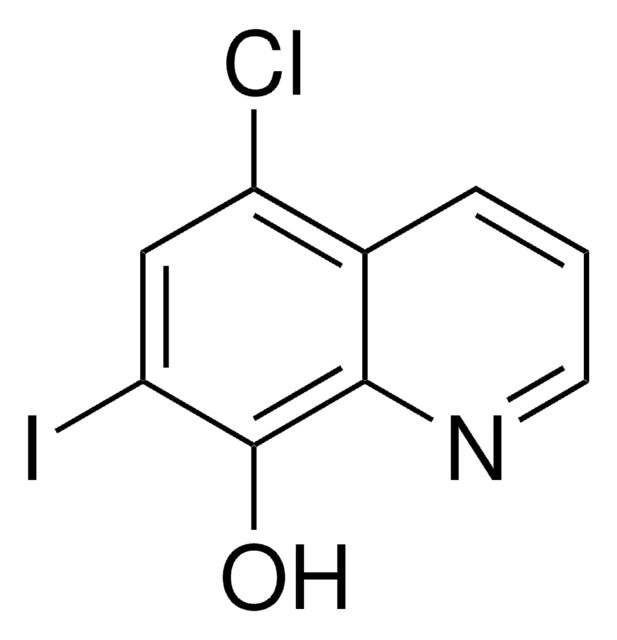
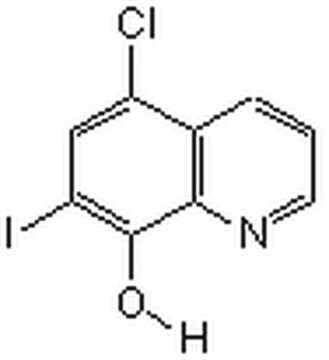
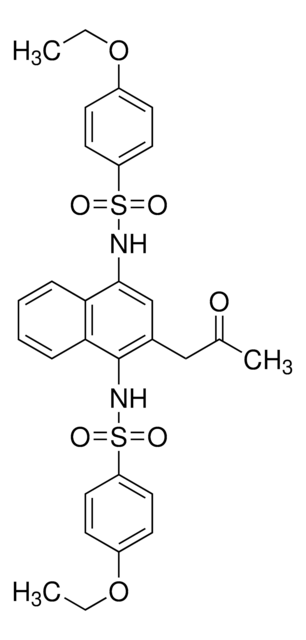
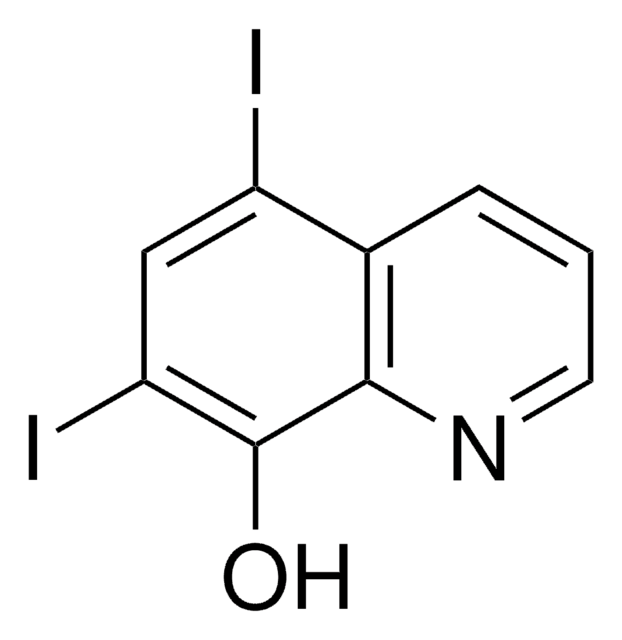
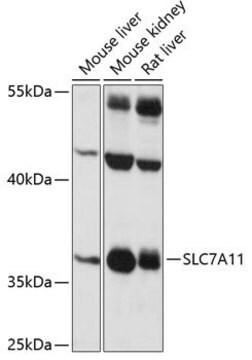
![2-[4-[(7-Chloro-4-quinolinyl)amino]pentyl] amino ethanol British Pharmacopoeia (BP) Reference Standard](/deepweb/assets/sigmaaldrich/product/structures/390/362/61c88f5c-c373-4489-9234-6bc366e641a7/640/61c88f5c-c373-4489-9234-6bc366e641a7.png)
